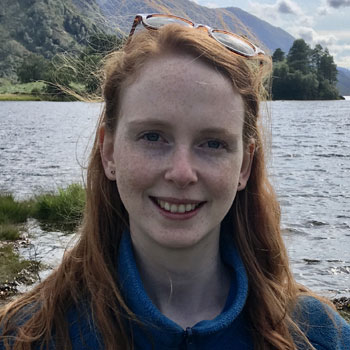Meet 2023 Sir Howard Dalton Young Microbiologist of the Year finalist: Anna Dewar
Posted on September 7, 2023 by Anna Dewar
The Sir Howard Dalton Young Microbiologist of the Year Prize is awarded by the Society each year. The prize recognises and rewards excellence in science communication by a Microbiology Society member who is a postgraduate student or postdoctoral researcher, having gained their PhD in the last two years. In the lead up to the final, taking place on 3 October 2023, we will be getting to know each of the finalists in this blog series.
Anna Dewar (University of Oxford, UK)

What are your current research interests?
I’m interested in understanding how microbes evolve and what explains variation across different microbial species. I’ve been focusing on an amazing feature of microbial evolution: horizontal gene transfer. Many microbes are capable of transferring their genes for various traits, such as breaking down a food molecule or being resistant to an antibiotic, to other cells. This is particularly true for bacteria.
Therefore, instead of evolutionary trees, the history of bacterial genes can appear more like a dense
web. In my research I aim to identify how horizontal gene transfer in bacteria impacts evolution. I am using a comparative genomics approach to explore what kinds of genes are expected to undergo more frequent transfer, and what consequences this may have for the structure of bacterial genomes.
What is the theme of your talk?
The theme of my talk is bacterial pangenomes and why they vary across species. A ‘pangenome’ is all the genes that have been sequenced in a species. Pangenomes vary in structure across bacteria. Some species have a high proportion of genes that vary between individuals, while in others virtually all their genes are shared. Many factors have been observed to potentially correlate with more or less variable pangenomes across species. However, whether such factors actually cause different species to have such different pangenome structures remains unclear.
To address this, I used a comparative genomics approach across 126 bacterial species. Overall, I found that bacterial lifestyle and ecology is the key factor causing variation in pangenome structure across species. These results illustrate the potential power of using comparative methods in combination with the ever-growing quantity of genomic data to address broad evolutionary questions.
How would you explain your research to a GCSE student?
Bacteria, like people, have genes to control how they look and behave. Unlike people, bacteria can swap their genes with each other. These can be genes that allow bacteria to cause disease or survive antibiotic treatment, so it’s important we understand this process if we are to prevent harmful bacteria from affecting humans, farm animals and crop plants.
Some species of bacteria frequently swap their genes with each other, while others very rarely swap their genes. Many factors correlate with this variation, but it is not clear what actually causes it. Using methods which allowed me to distinguish causation from correlation, I found that species which have more variable lifestyles and environments are those with the most variable genomes.
If you weren’t a microbiologist what would you be?
I’m also interested in the evolution of cooperation, so I’d likely be working on intriguing questions such as why birds care for their chicks, or why ants and bees form colonies. If I wasn’t a scientist, I’d probably be a writer or a teacher – conveniently, both are important parts of being a microbiologist. I’d also love to work in a museum with loads of cool fossils!
Why is it important for you to be a member of the Microbiology Society?
The Microbiology Society provides a huge network of scientists, and across its journals publishes high quality articles which I find very helpful for my own research. The Society’s Annual Conference was the first major conference I attended, and since then I have been going every year. The community is so friendly and the breadth of amazing science allows me to hear about new areas of research which I may have never come across before.
Updates about the event will also be shared on our social media channels – follow us @MicrobioSoc on Twitter (using the hashtag #YoungMicro23) and on Facebook, Instagram and LinkedIn.

